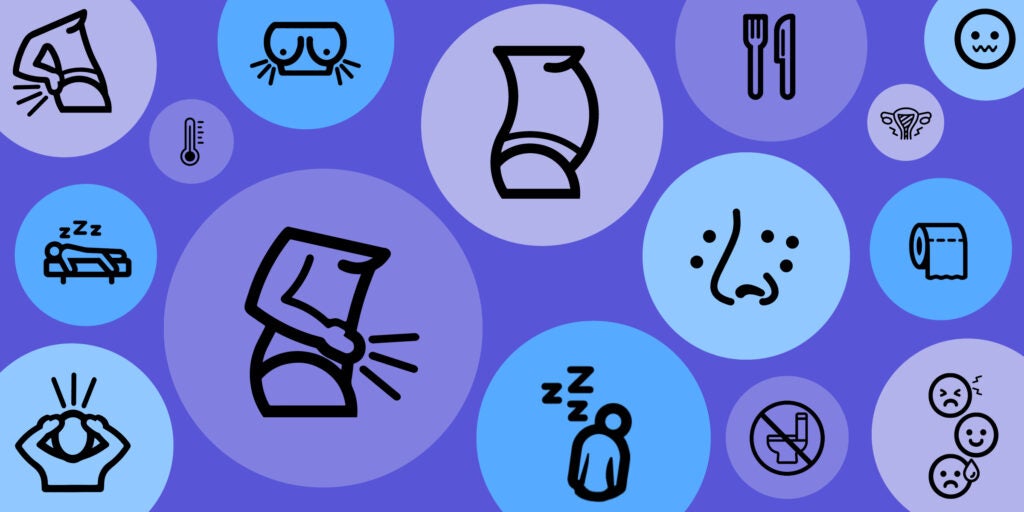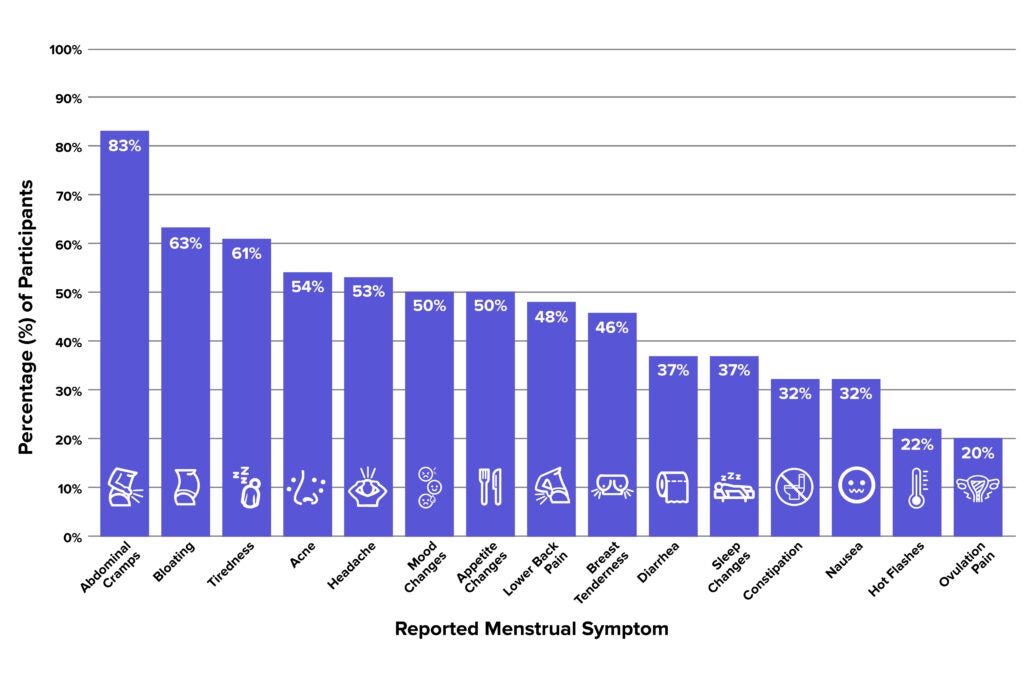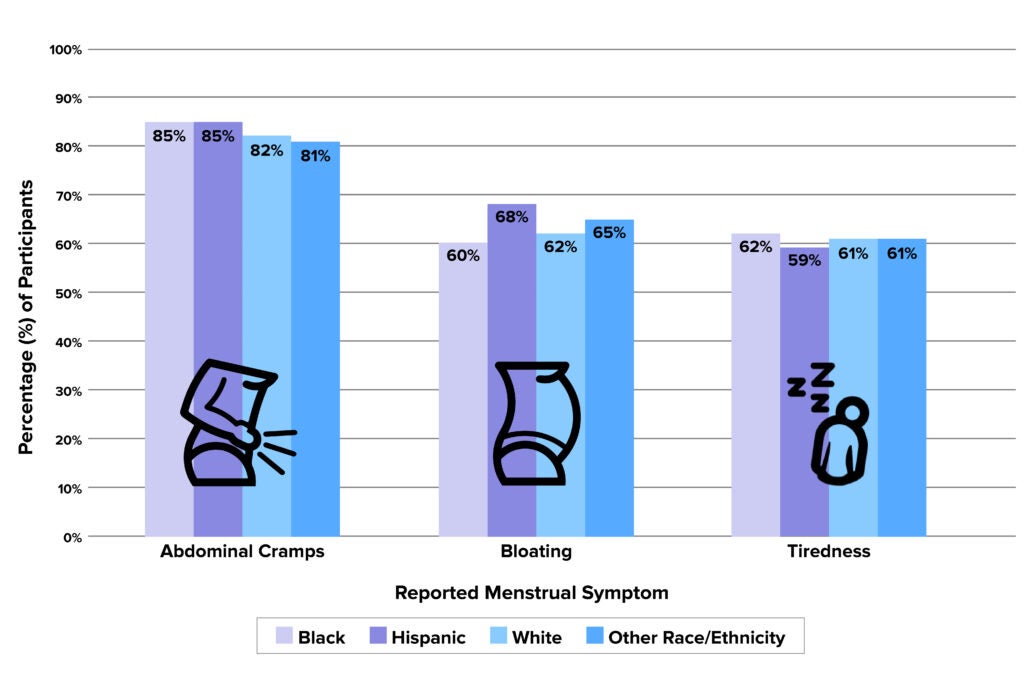Apple Women’s Health Study
The Apple Women’s Health Study is the first long-term research study of this scale and scope that aims to advance the understanding of menstrual cycles and their relationship to various health conditions.
Menstrual symptom data can help end period stigma
Menstrual symptoms that are being investigated by the Apple Women’s Health Study include abdominal cramps, bloating, tiredness, acne, headache, mood changes, appetite changes, lower back pain, breast tenderness, diarrhea, sleep changes, constipation, nausea, hot flashes, and ovulation pain.

In line with this year’s celebration of International Women’s Day, the Apple Women’s Health Study team is shedding light on how menstrual research and symptom data can help to end stigma associated with periods.
MARCH 2021: Menstruation occurs monthly for many women, girls, and people with menstrual cycles. Yet, there is a stigma associated with periods. The negative perception of menstruation at a societal level is often internalized at a personal level. Feelings of shame, embarrassment, or fear can hurt self-esteem and influence behaviors.
Research has found that stigma prevents women from seeking health care for menstrual-related pain. Since the topic of periods is often avoided in conversations altogether, there is a lack of understanding about when menstrual symptoms require medical attention.
Menstruation has also been used as a reason to justify excluding women from health research. As a result, gender inequality has limited researchers’ understanding of menstrual, reproductive, and women’s health.
International Women’s Day is a reminder that a great deal of work still needs to be done to achieve gender equity, including in the health space. Thanks to cycle tracking and survey data from participants like you, the Apple Women’s Health Study is expanding knowledge of menstruation in an effort to eliminate stigma.
Many different menstrual symptoms
Preliminary analysis of data from participants reveals that there are a wide range of menstrual cycle symptoms. Out of the first 10,000 participants who enrolled and responded to the demographics survey, 6,141 participants tracked period symptoms.
The most commonly tracked symptom was abdominal cramps, which was reported by 83% of the participants. Bloating was the second most reported symptom (63% of participants), and tiredness was the third (61% of participants).
Just over half of the participants reported experiencing acne (54%) and headache (53%). Half of the participants (50%) reported mood changes and appetite changes. Lower back pain and breast tenderness were reported by slightly less than half of the participants. 48% reported lower back pain and 46% reported breast tenderness.
Diarrhea and sleep changes were reported by 37% of the participants. Constipation and nausea were each reported by 32% of the participants. Finally, the least reported symptoms were hot flashes and ovulation pain. These symptoms were reported by 22% and 20% of the participants, respectively.
The figure below illustrates these menstrual symptoms data.

Note: Data on menstrual symptoms is from November 14, 2019 – December 31, 2020. The total number of participants who tracked at least one menstrual symptom, as recorded in the Health app is 6,141. The percentage (%) of participants = (the number of participants who experienced the menstrual symptom at least once) divided by (the number of participants who have tracked menstrual symptoms in the Health app). Percentages have been rounded to whole numbers.
Preliminary analysis shows that across demographics, including age, race, and geographic location, there were similarities in frequently reported symptoms. For example, across Black, Hispanic, and White participants, the most commonly reported symptoms were abdominal cramps, bloating, and tiredness.
Menstrual symptom frequencies across race/ethnicity are shown in the figure below.

Note: Data on menstrual symptoms is from November 14, 2019 – December 31, 2020. The total number of participants who tracked at least one menstrual symptom, as recorded in the Health app, is 6,141. The percentage (%) of participants = (the number of participants who experienced the menstrual symptom at least once) divided by (the number of participants who have tracked menstrual symptoms in the Health app). Percentages have been rounded to whole numbers. The race/ethnic category for Black includes Black/African American/African. The race/ethnic category for Hispanic includes Latina/Hispanic/Spanish. Other Race/Ethnicity includes: Asian; American Indian; Middle Eastern; None of these categories fully describe me; I prefer not to answer.
Participants are contributing to health discovery
Thanks to data shared by participants like you, Apple Women’s Health Study researchers are able to study a wide range of menstrual symptoms.
The first step in removing stigma is understanding menstruation. Although menstruation is unique from person to person, women, girls, and people with menstrual cycles are not alone in their period journeys. The Apple Women’s Health Study is working to end stigma, normalize the experience of symptoms, and expand knowledge of how to address a variety of health challenges.
To achieve a gender equal future, women, girls, and people with menstrual cycles must have access to the health services and menstrual products needed to feel safe and empowered. By building knowledge, the study is helping to understand factors that make menstruation difficult and isolating for some people. This includes cycle irregularity, extreme pain, or ovarian cysts.
The Apple Women’s Health Study team thanks participants, like you, for your continued contribution to health discovery. Together, researchers and participants are strengthening awareness of women’s health issues and addressing gender inequality in health.
- As-Sanie, S., Black, R., Giudice, L. C., Valbrun, T. G., Gupta, J., Jones, B., … & Nebel, R. A. (2019). Assessing research gaps and unmet needs in endometriosis. American journal of obstetrics and gynecology, 221(2), 86-94.
- Chrisler, J. C. (2011). Leaks, lumps, and lines: Stigma and women’s bodies. Psychology of Women Quarterly, 35(2), 202-214.
- Johnston-Robledo, I., & Chrisler, J. C. (2013). The menstrual mark: Menstruation as social stigma. Sex roles, 68(1), 9-18.
- Welt, C. (2020). Physiology of the normal menstrual cycle. UptoDate. Accessed online.
- UN Women. (2021). “International Women’s Day 2021 theme – Women in leadership: Achieving an equal future in a COVID-19 world”. Accessed online.